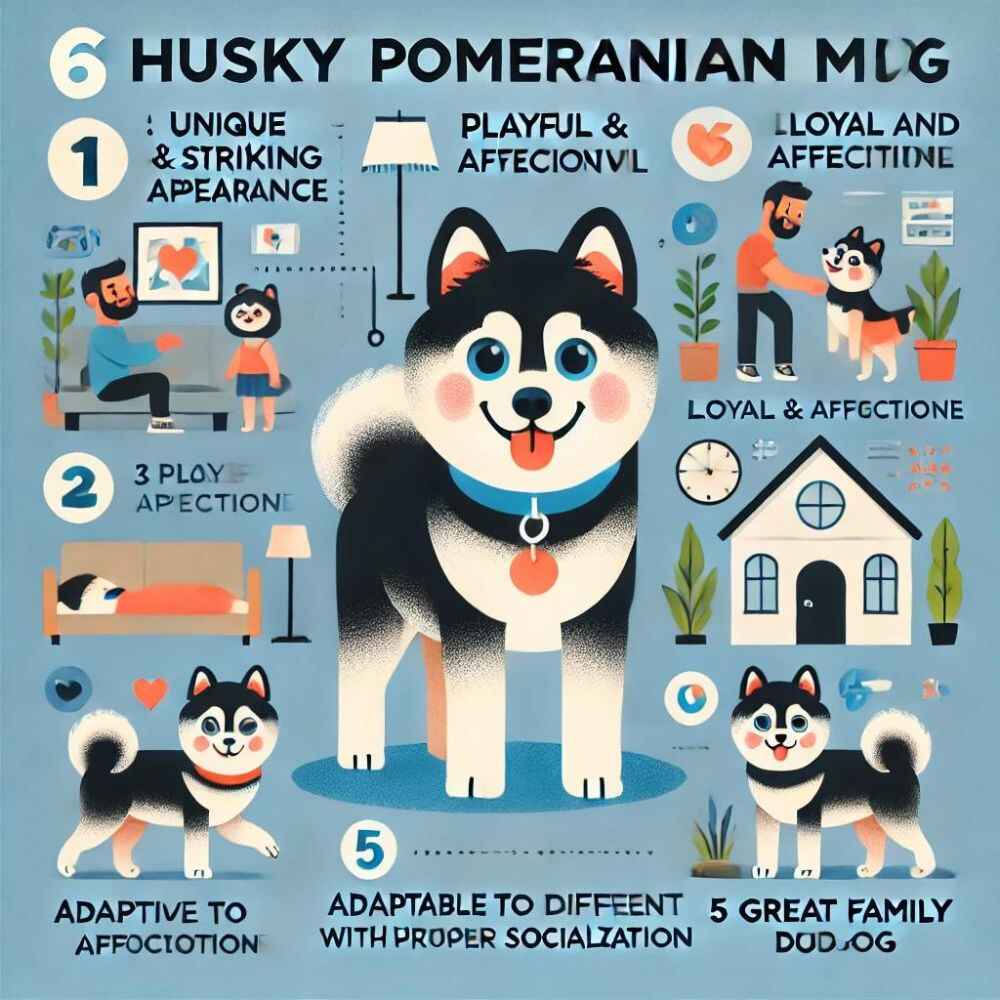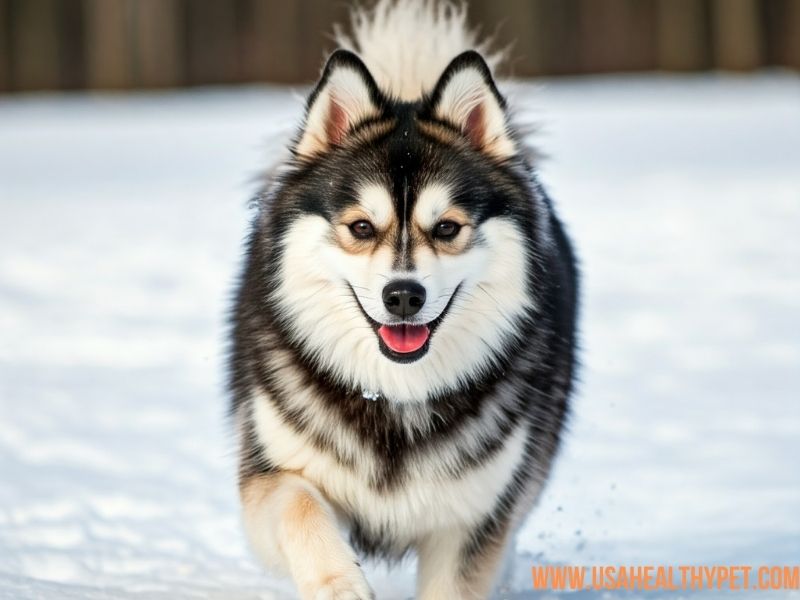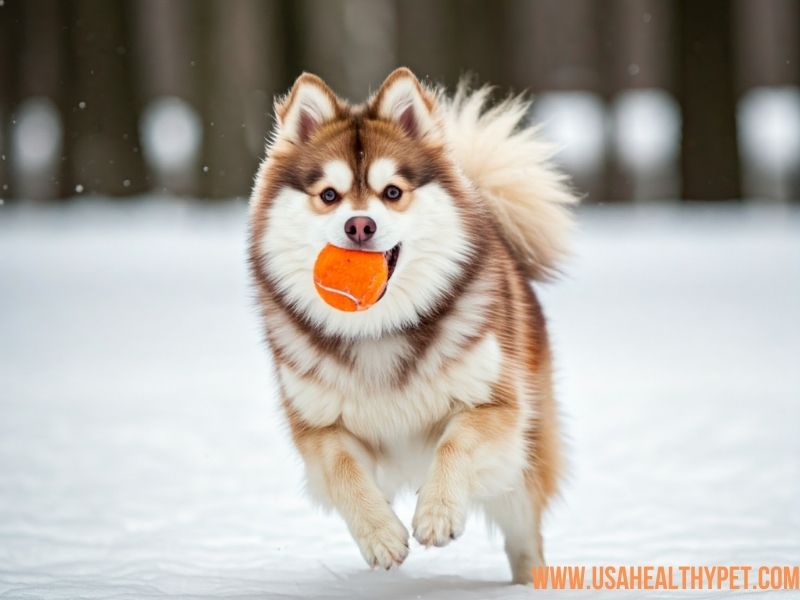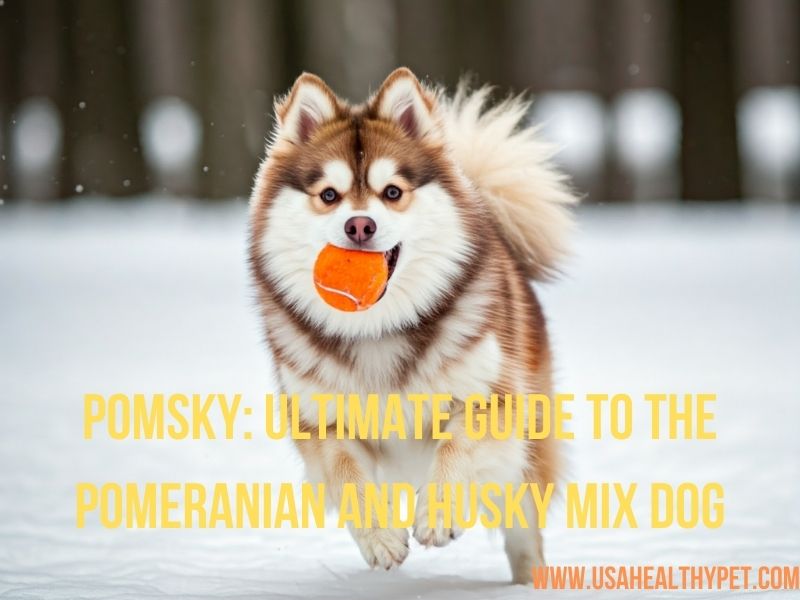If you’ve ever wondered what happens when you mix a fluffy Pomeranian with a majestic Siberian Husky, meet the Pomsky! This adorable hybrid has taken the world by storm, and it’s not hard to see why.
The Pomsky offers a compact, energetic, and incredibly lovable companion that turns heads wherever it goes. But before you dive into the world of Pomskies, let’s explore everything there is to know about this designer dog breed.
What is a Pomsky?
The Pomsky is a crossbreed between a Pomeranian and a Siberian Husky. While the two parent breeds are quite different in size and temperament, their combination creates a dog that’s both stunning in appearance and engaging in personality.
Imagine having a dog that’s the size of a Pomeranian but with some of the striking features of a Husky—pretty cool, right?
Siberian Husky and Pomeranian Mix Appearance
One of the first things people notice about Pomskies is how unique they look. No two Pomskies are exactly alike, and their appearance can vary quite a bit depending on which parent’s traits they inherit more of.
Size and Weight
- Pomskies typically range from 10 to 25 pounds, but some can be as small as 7 pounds or as large as 30 pounds.
- It really depends on the parents. If you’re hoping for a pint-sized pup that stays small, look for a Pomsky with more Pomeranian traits.
Coat Colors and Texture
- Pomskies usually have a thick, double-layered coat similar to a Husky, which means they shed—quite a bit!
- The coat can come in a variety of colors, including black, white, gray, brown, or a mix.
- Some Pomskies even have the famous Husky mask or piercing blue eyes, giving them that striking wolf-like look in a smaller package.
Life Span
Pomskies typically live between 12 to 15 years with proper care and attention.

Husky Pomeranian Dog Temperament
Pomskies are a delightful mix of their Pomeranian and Husky parents when it comes to personality. You’ll find they can be both feisty and fun-loving, as well as incredibly affectionate.
Playful and Energetic
With a Husky as one parent, it’s no surprise that Pomskies are full of energy. They love to play, run around, and entertain themselves with toys.
Be prepared for some zoomies around the house! A bored Pomsky, however, can turn destructive, so keeping them busy with activities and exercise is important.
Loyal and Loving
Like Pomeranians, Pomskies are very loyal to their owners and enjoy being close to their human companions.
They want attention and love being part of the family. If you’re looking for a dog that will follow you from room to room, a Pomsky may just be the perfect fit.
Pros and Cons of Owning a Husky Pomeranian Mix Dog
| Pros | Cons |
|---|---|
| Unique and striking appearance | Regular grooming needed due to heavy shedding |
| Playful and energetic | Can be stubborn and difficult to train |
| Loyal and affectionate | Prone to separation anxiety when left alone too long |
| Adaptable to different living situations (apartments, houses) | Requires a lot of exercise and mental stimulation |
| Great family dog with proper socialization | Can be expensive to purchase and maintain |
Training a Pomsky: Challenges and Tips
Training a Pomsky can be a bit tricky. While they are intelligent dogs, they also have a stubborn streak. Husky traits can make them independent and headstrong, so you’ll need to start training early and be consistent.
Positive reinforcement works best, so reward them with treats and praise when they get things right.

Exercise Needs of Husky Pomeranian Mix Dog
Like their parents, the Husky Pomeranian mix dog requires regular exercise to burn off their energy.
- Daily walk: A daily walk, some playtime, and even a backyard run can help burn off their energy.
- Mental stimulation: Providing puzzle toys or games can help keep their minds sharp.
Studies on the Siberian Husky suggest that Pomskies often have high levels of energy and curiosity. Without proper outlets for their energy, they may become destructive.
Experts recommend at least an hour of physical activity a day, combined with mentally stimulating toys or puzzles to keep them engaged.
“A tired Pomsky is a happy Pomsky. Give them regular exercise and mental challenges, and you’ll see their behavior improve dramatically,” according to Dr. James Martin, a canine behavior expert.
Diet and Nutrition: Feeding Your Pomsky
Feeding your Pomsky the right diet is key to keeping them healthy. Since they are smaller dogs, they don’t need massive portions, but their diet should still be high-quality and balanced.
Opt for dog food that’s appropriate for their size, age, and activity level. You’ll want to avoid overfeeding them as Pomskies can be prone to obesity if their diet isn’t carefully monitored.
Health Concerns in a Pomeranian Siberian Husky Mix
Like all breeds, the Pomeranian Siberian Husky mix can have certain health issues from their parents. Which include:
- Hip dysplasia (more common in Huskies)
- Eye issues like cataracts
- Dental problems (due to their smaller mouth)
Regular vet check-ups are important to catch any issues early and keep your Pomsky in good shape.
According to Dr. Sarah Richards, a canine geneticist, “The key to maintaining the health of designer breeds is responsible breeding practices and proactive health care from puppyhood.”
Grooming Your Pomsky: What to Expect
With a thick double coat, Pomskies need regular grooming. Expect shedding—lots of it! You’ll want to brush them several times a week, especially during shedding seasons. Regular baths, nail trims, and ear cleaning are also part of keeping your Pomsky well-groomed.
If you’re someone who loves a clean house and can’t handle pet hair, a Pomsky may be a challenge in that department. But with regular grooming, you can manage the fur situation.
Research from the American Pet Products Association (APPA) shows that dog breeds with double-layered coats, like Pomskies, require regular grooming to avoid matting and excessive shedding.
Is a Pomsky Right for You?
Pomskies are adorable and full of personality, but they’re not for everyone. They require regular exercise, grooming, and attention. If you’re looking for a low-maintenance lap dog, a Pomsky might not be the best fit.
But if you want a fun, playful, and loyal companion with a unique look, you’ll probably fall in love with this mix.
How Much Does a Pomsky Cost?
Pomskies can be expensive. Depending on the breeder, you could pay anywhere from $1,000 to $5,000 for a Pomsky puppy. The price usually depends on the pup’s appearance, lineage, and whether or not they come with certain health guarantees.
Always do your research and choose a reputable breeder who prioritizes the health and well-being of the dogs.

Living with a Pomsky: What Owners Say
Many Pomsky owners rave about their dog’s playful personality and how they’re always the center of attention. Here are some key points from Pomsky owners:
- Energy and Fun: Owners love the energy and fun their Pomsky brings to the home.
- Grooming Demands: Some mention the grooming demands and exercise needs as challenges.
- Perfect for Active Families: It’s clear that this dog thrives best with owners who can keep up with their active lifestyle and grooming requirements.
Pomsky vs Other Designer Dogs
While the Pomsky has a unique appeal, there are plenty of other designer dogs to consider, like the Cavapoo (Cavalier King Charles Spaniel and Poodle mix) or the Goldendoodle (Golden Retriever and Poodle mix).
Each hybrid comes with its own set of traits, so it’s essential to do your research to see which one fits your lifestyle best.
Finding a Reputable Pomsky Breeder
If you’ve decided that a Pomsky is the dog for you, take your time to find a reputable breeder. Ask about health screenings for the parents, visit the breeding facility if possible, and make sure the puppies are raised in a loving, clean environment.
Avoid puppy mills or any breeder who doesn’t seem to prioritize the well-being of their dogs.
Conclusion: Should You Get a Pomsky?
If you’re ready for a fun, energetic, and loyal companion, a Pomsky could be a great addition to your life. They’re small but mighty, with a big personality packed into a little body.
However, they do require attention, exercise, and grooming. Make sure you’re ready for the commitment, and if you are, you’ll be rewarded with a loving, playful friend for life.
FAQs
- Are Pomskies good for apartments?
Yes, Pomskies can adapt to apartment living as long as they get enough exercise and mental stimulation. - Do Pomskies bark a lot?
Pomskies can be vocal, especially if they’re bored or anxious. Training can help reduce excessive barking. - How long do Pomskies live?
Pomskies typically live between 12 to 15 years with proper care and attention. - Are Pomskies good with kids?
Yes, Pomskies are generally good with children, especially if socialized early, but supervision is always recommended with small kids. - Can Pomskies be left alone?
Like most dogs, Pomskies don’t enjoy being left alone for long periods. They can develop separation anxiety if left alone too often.
